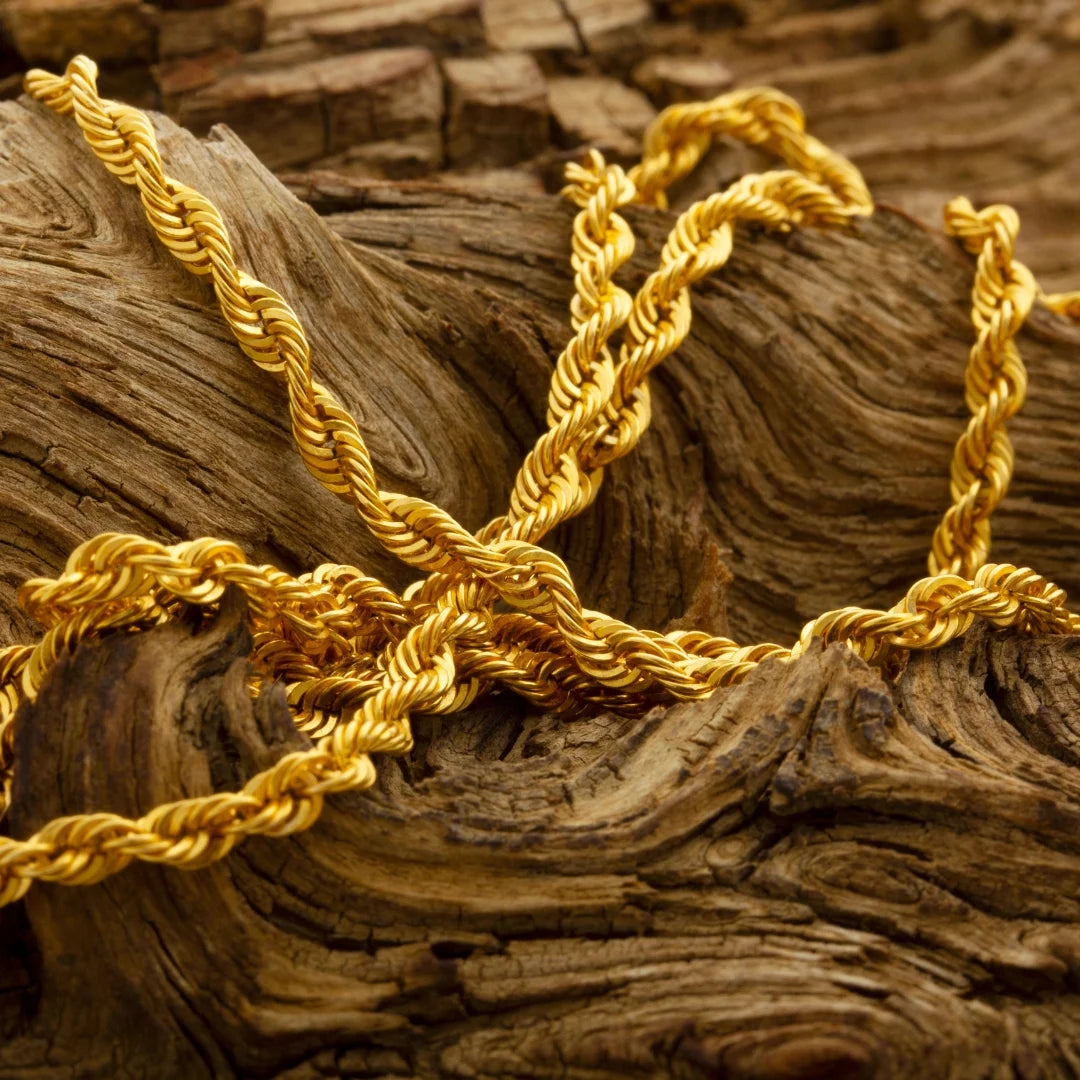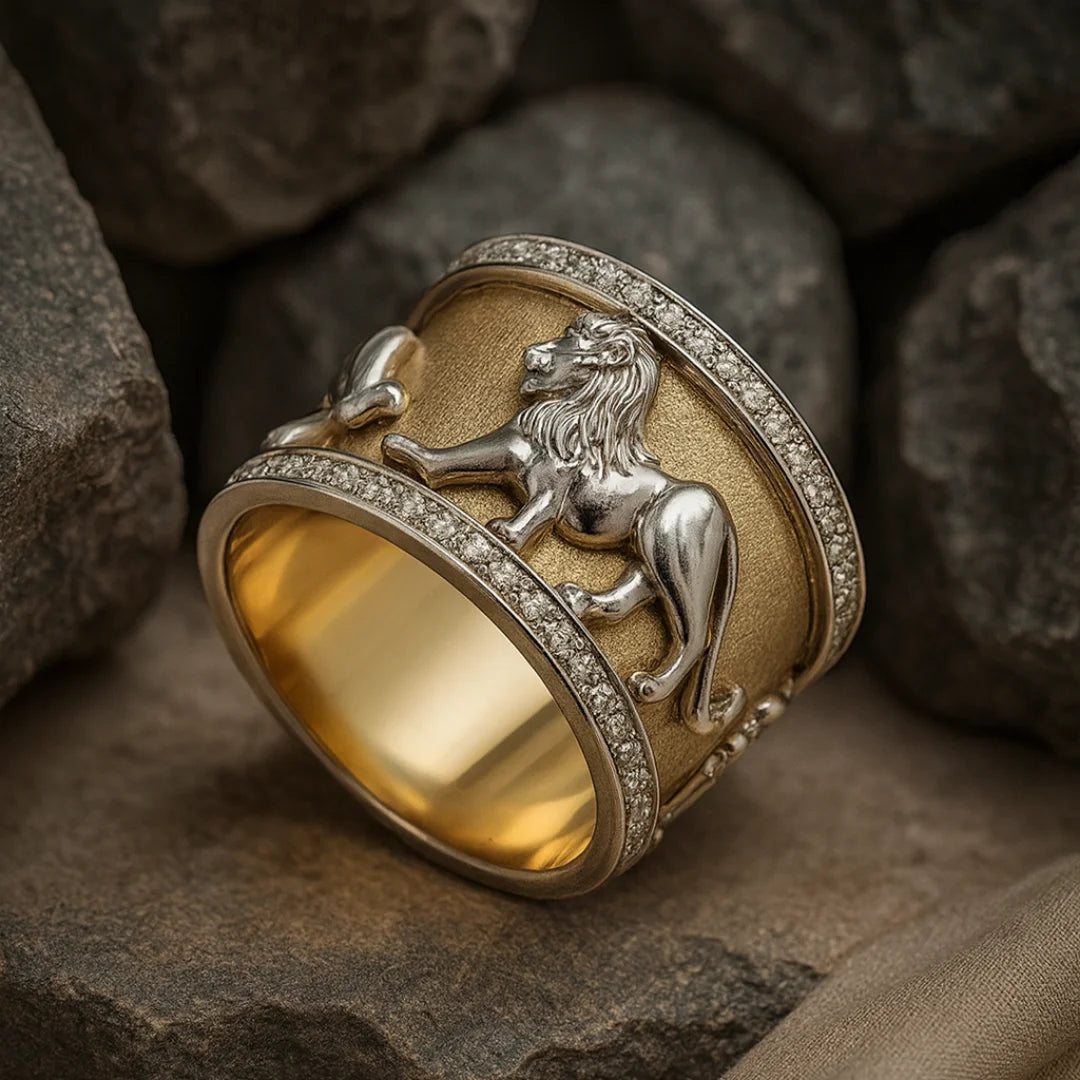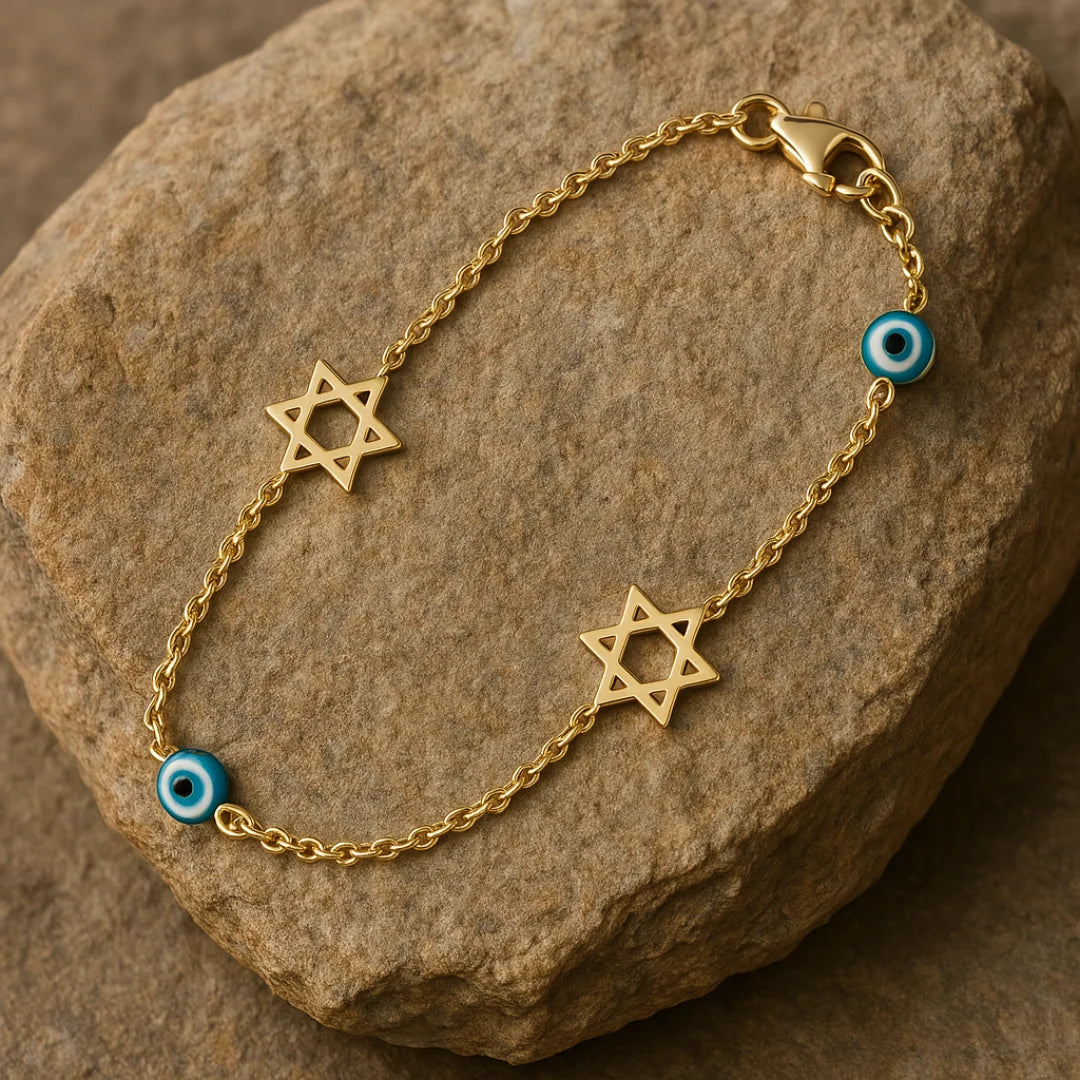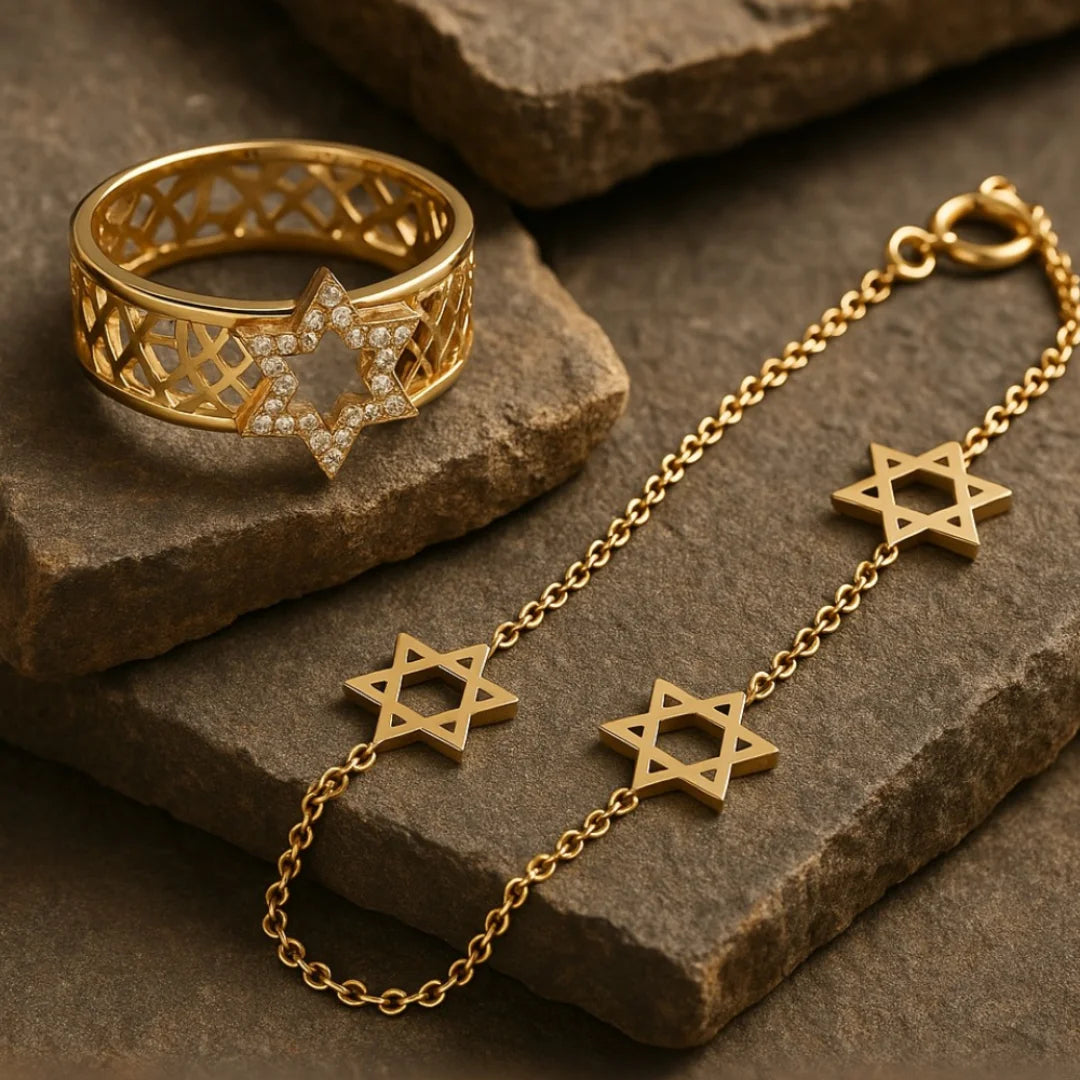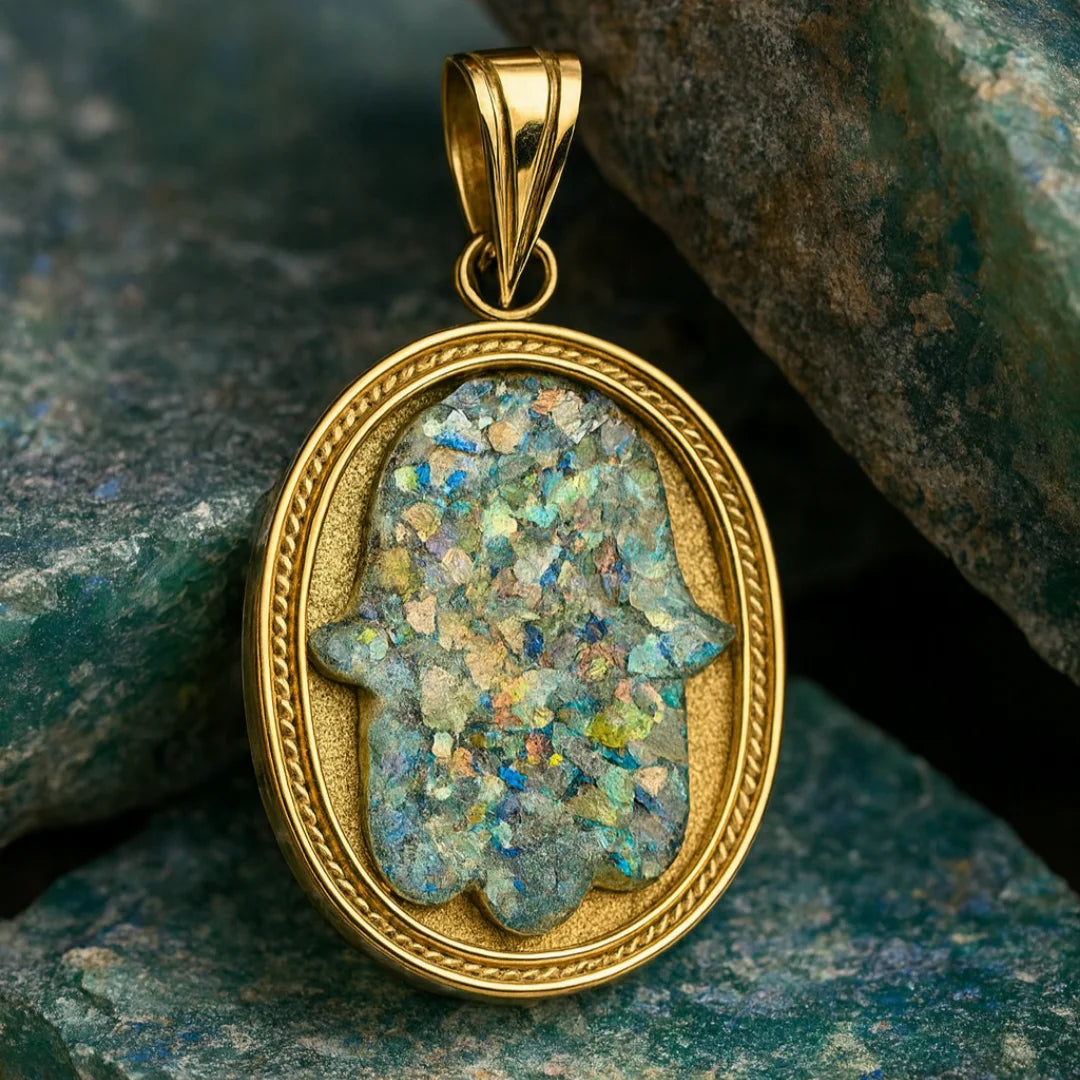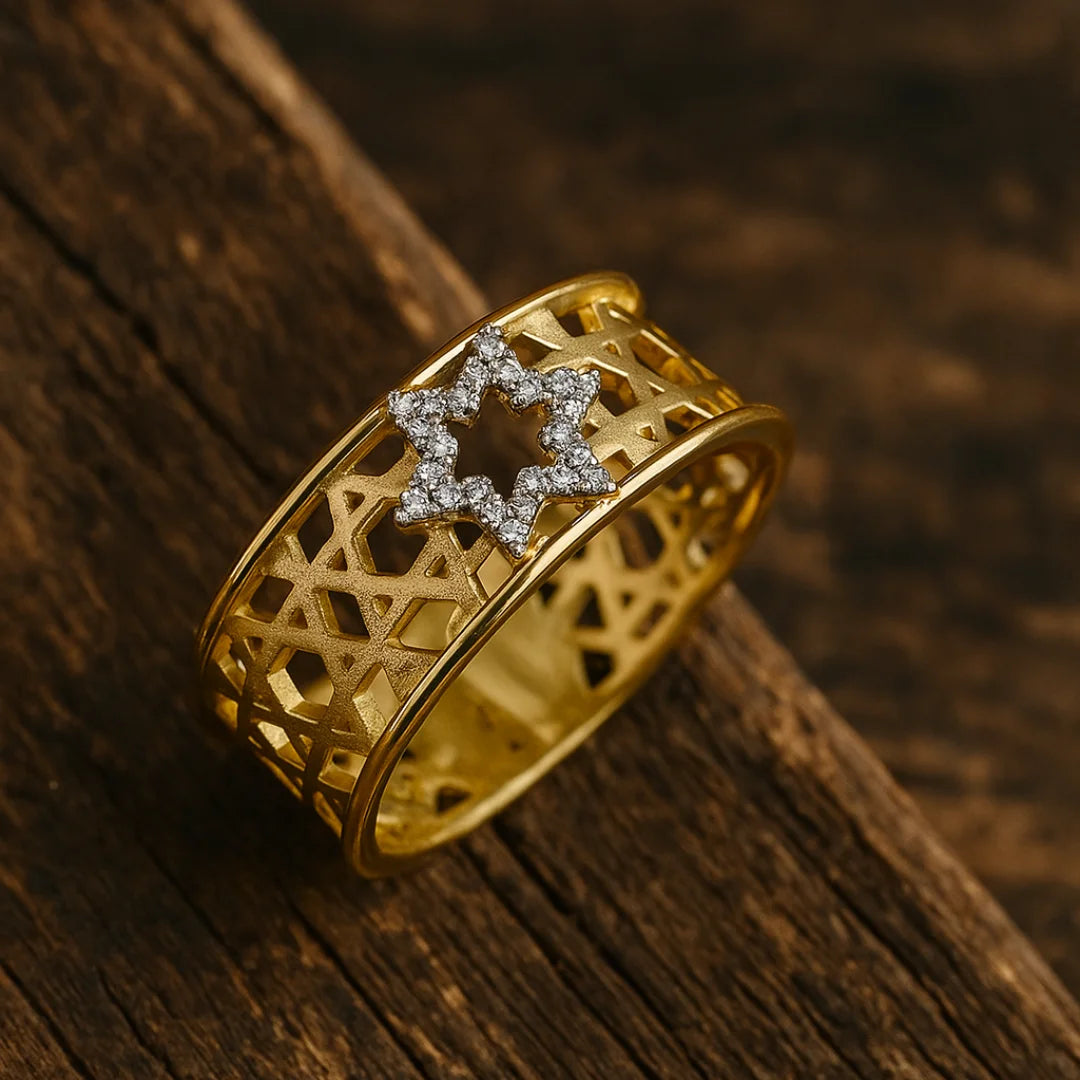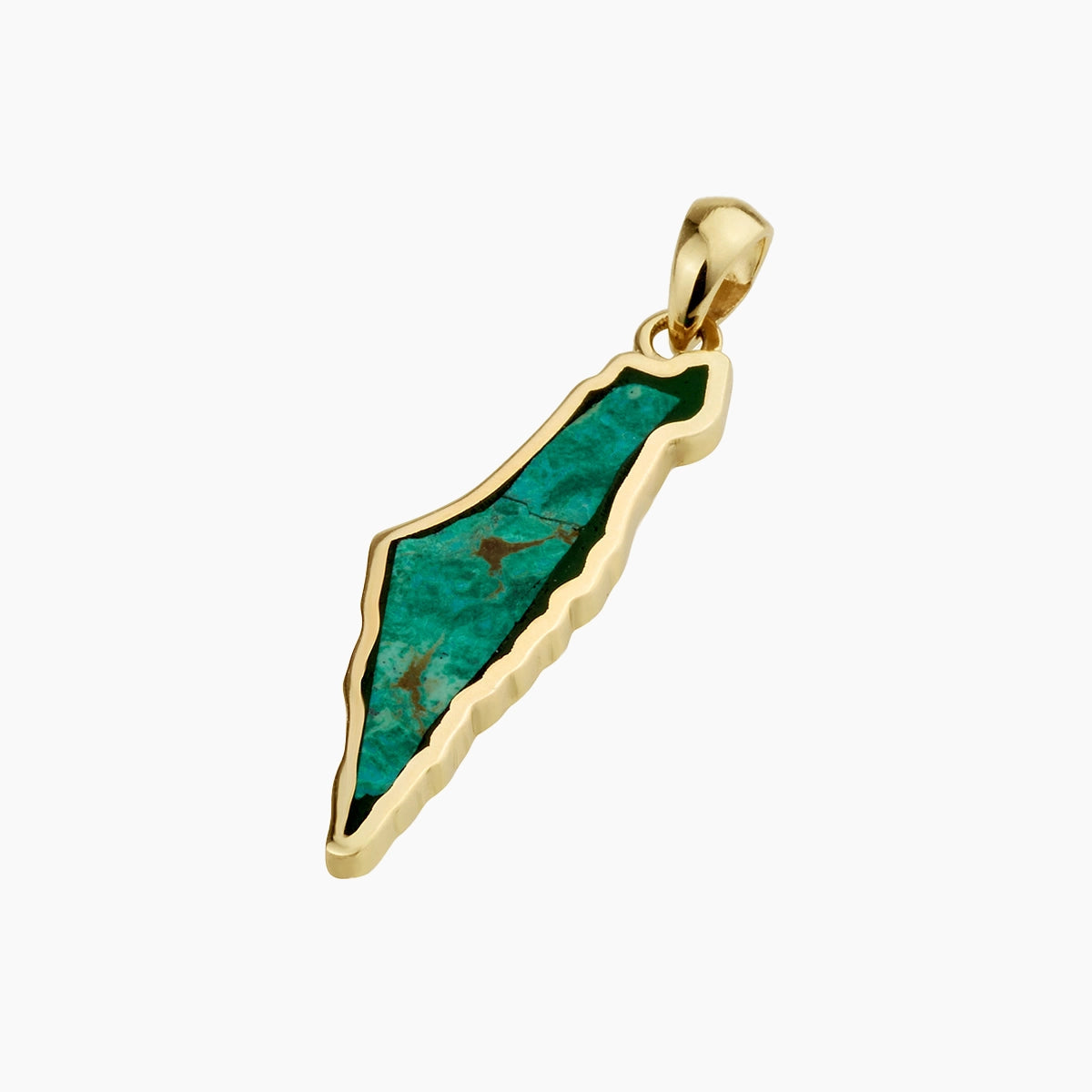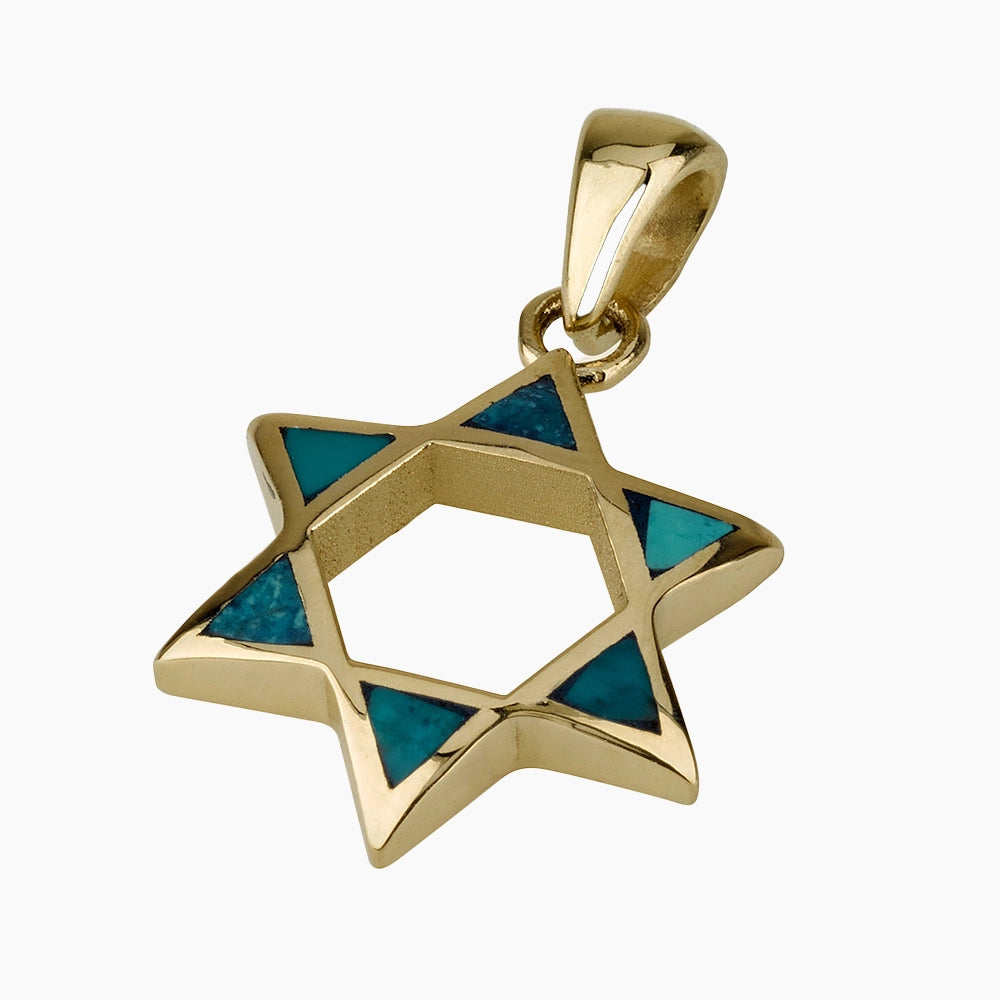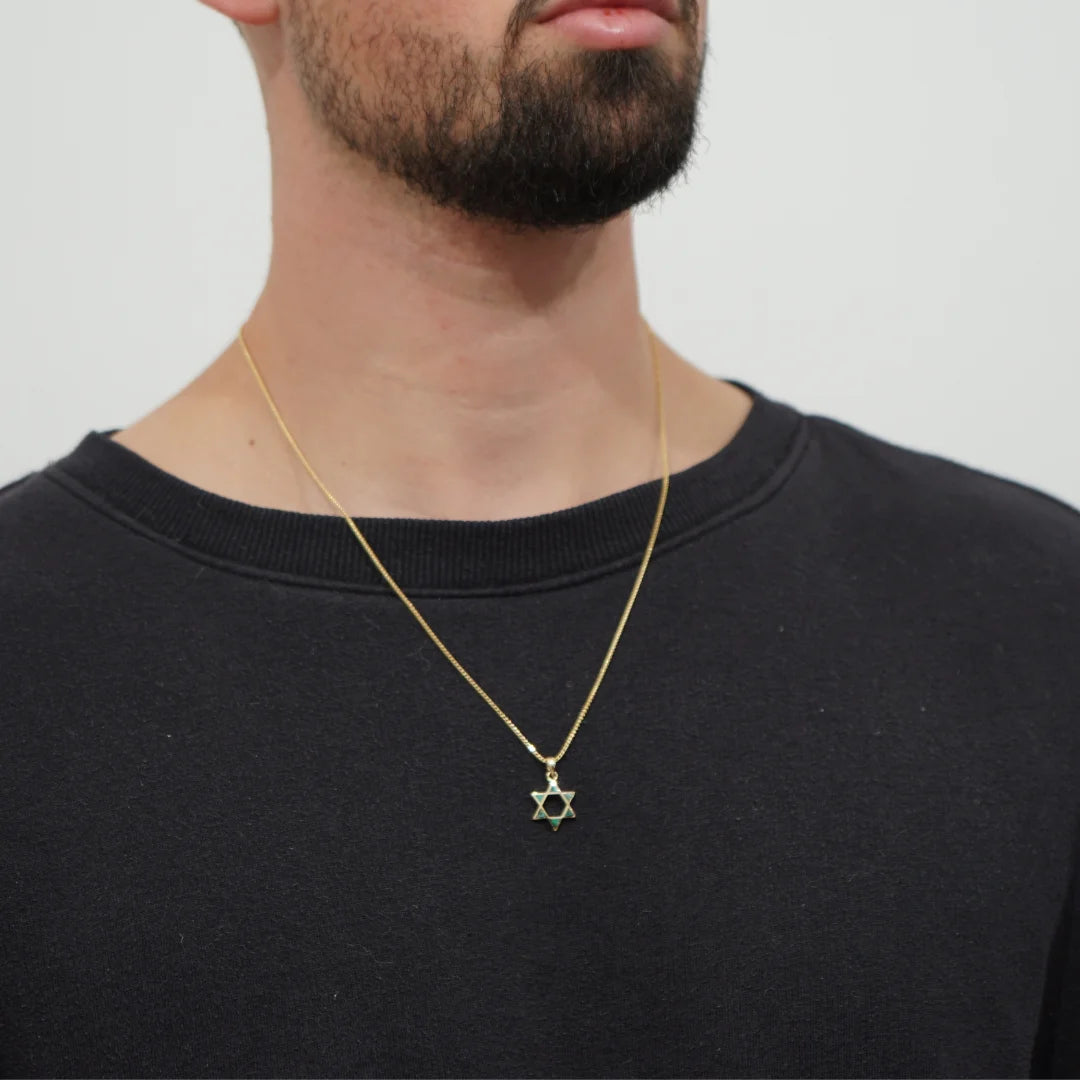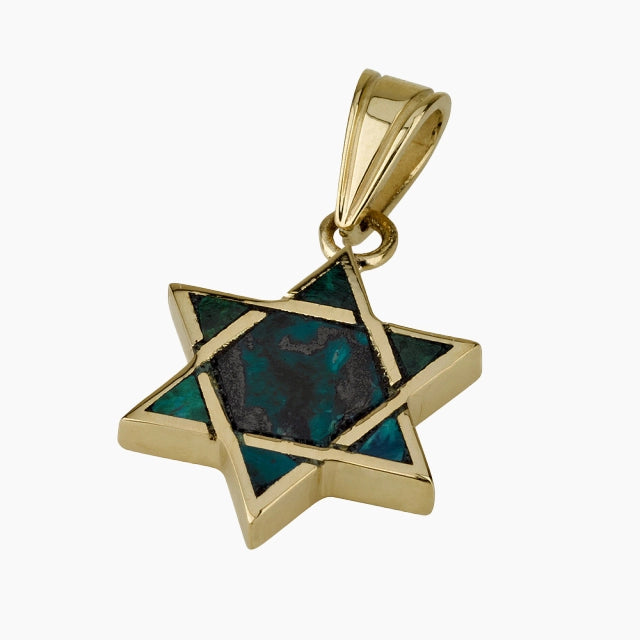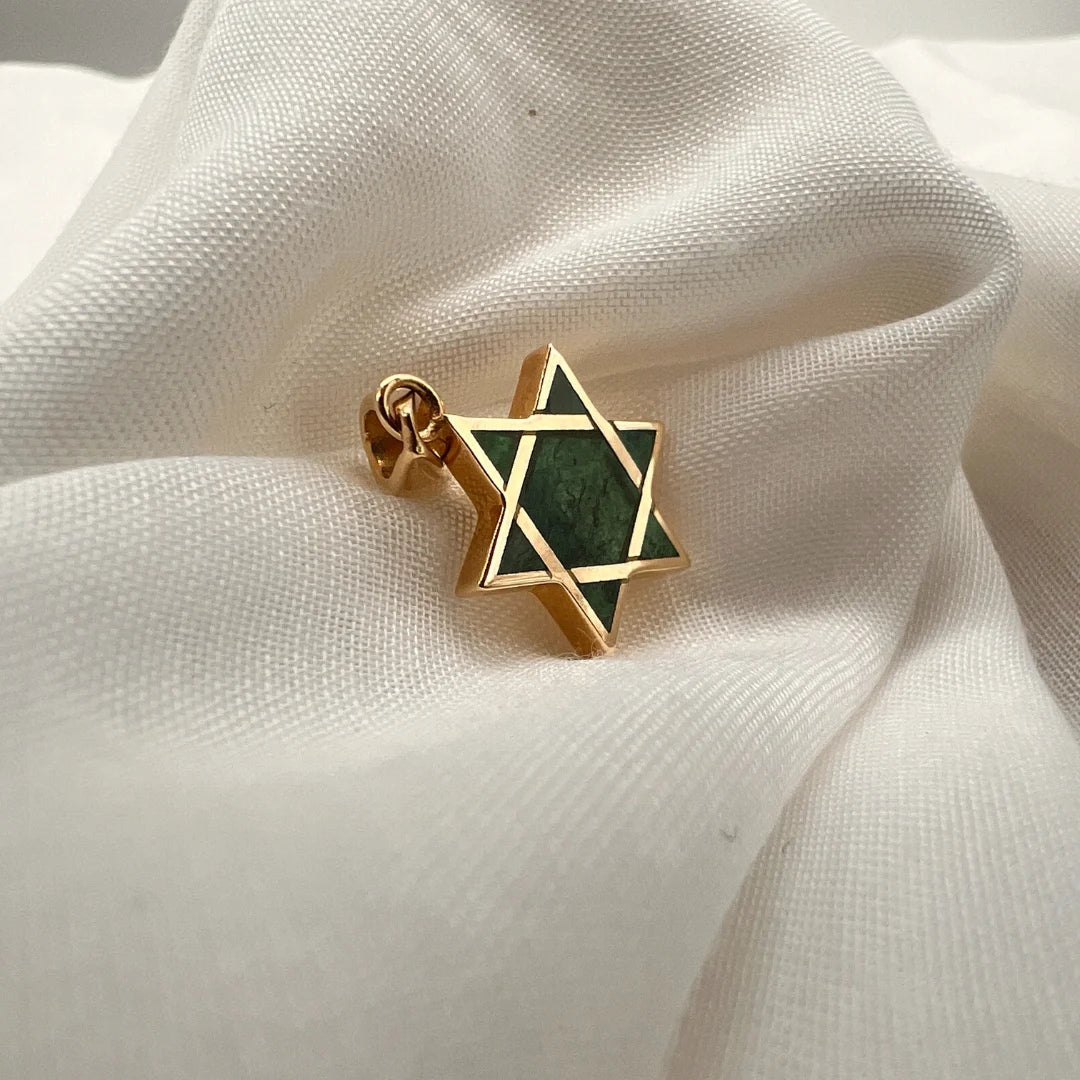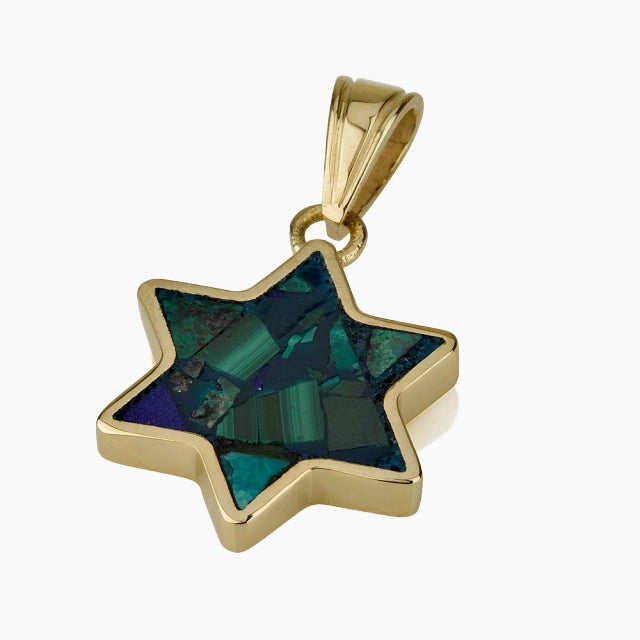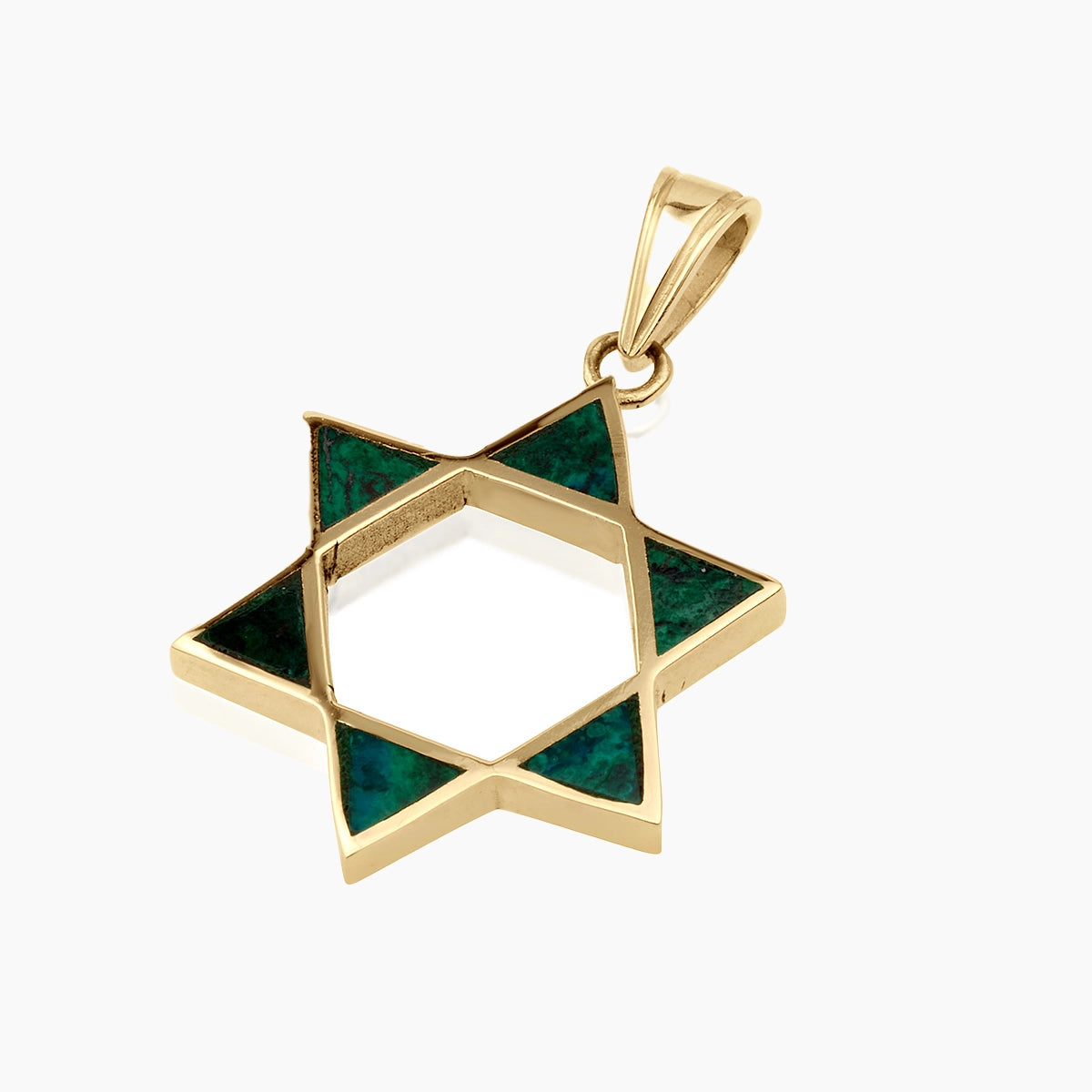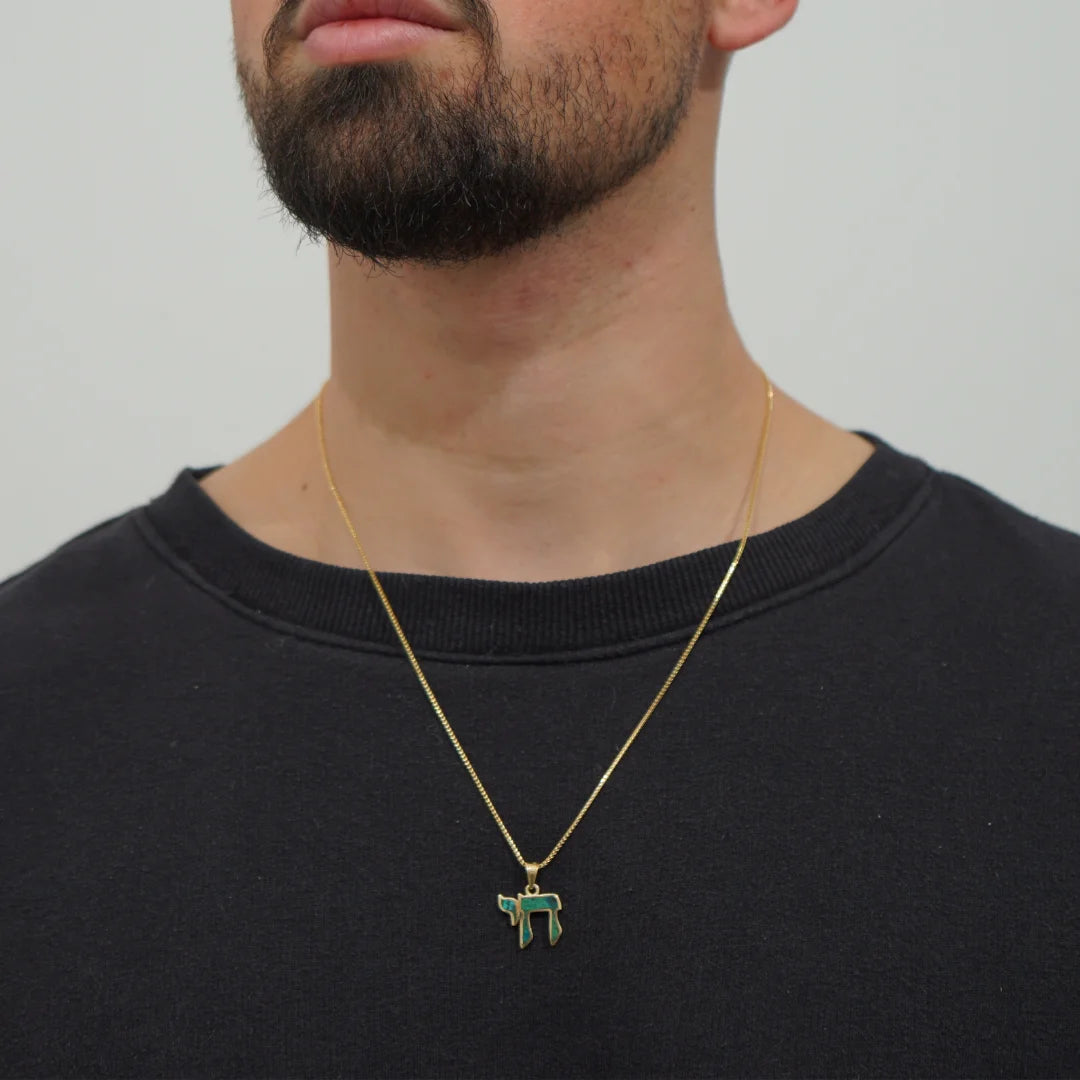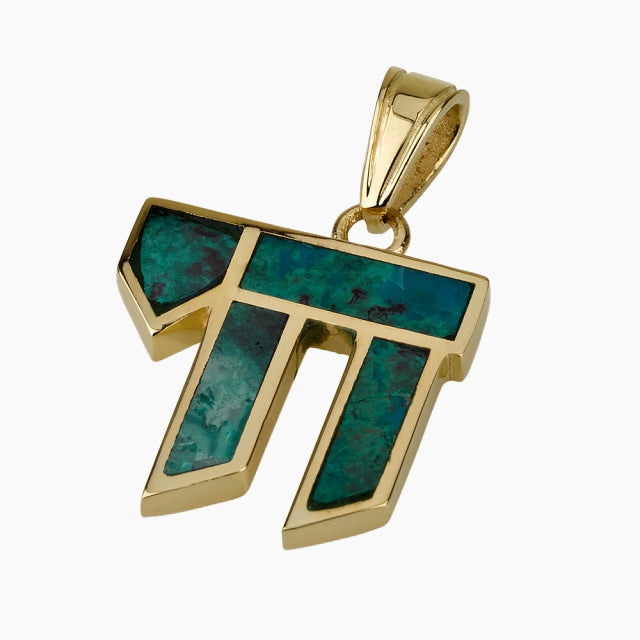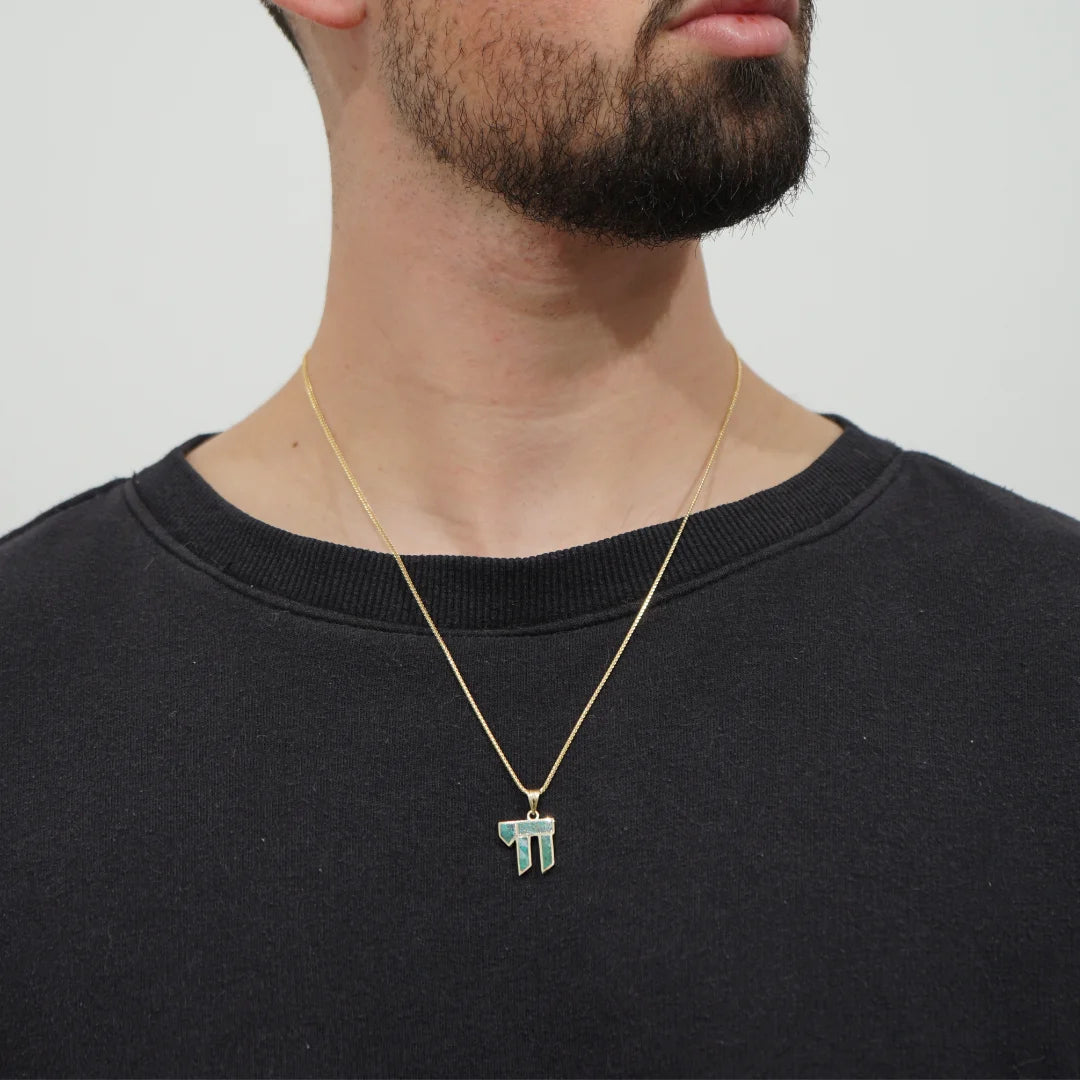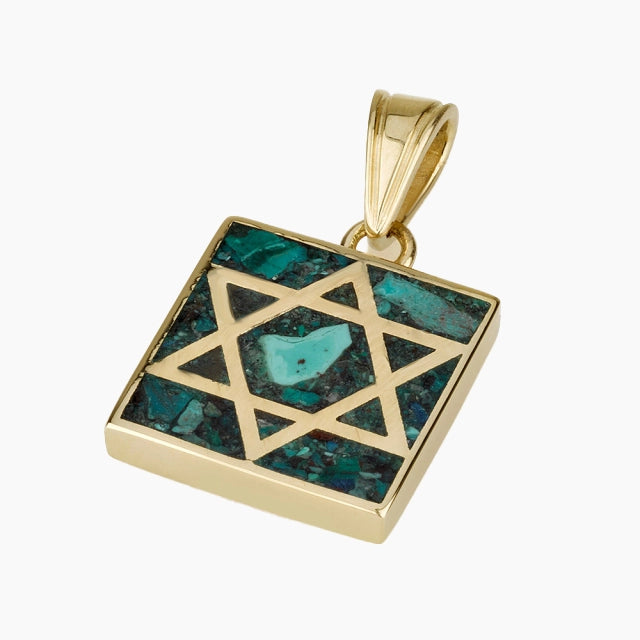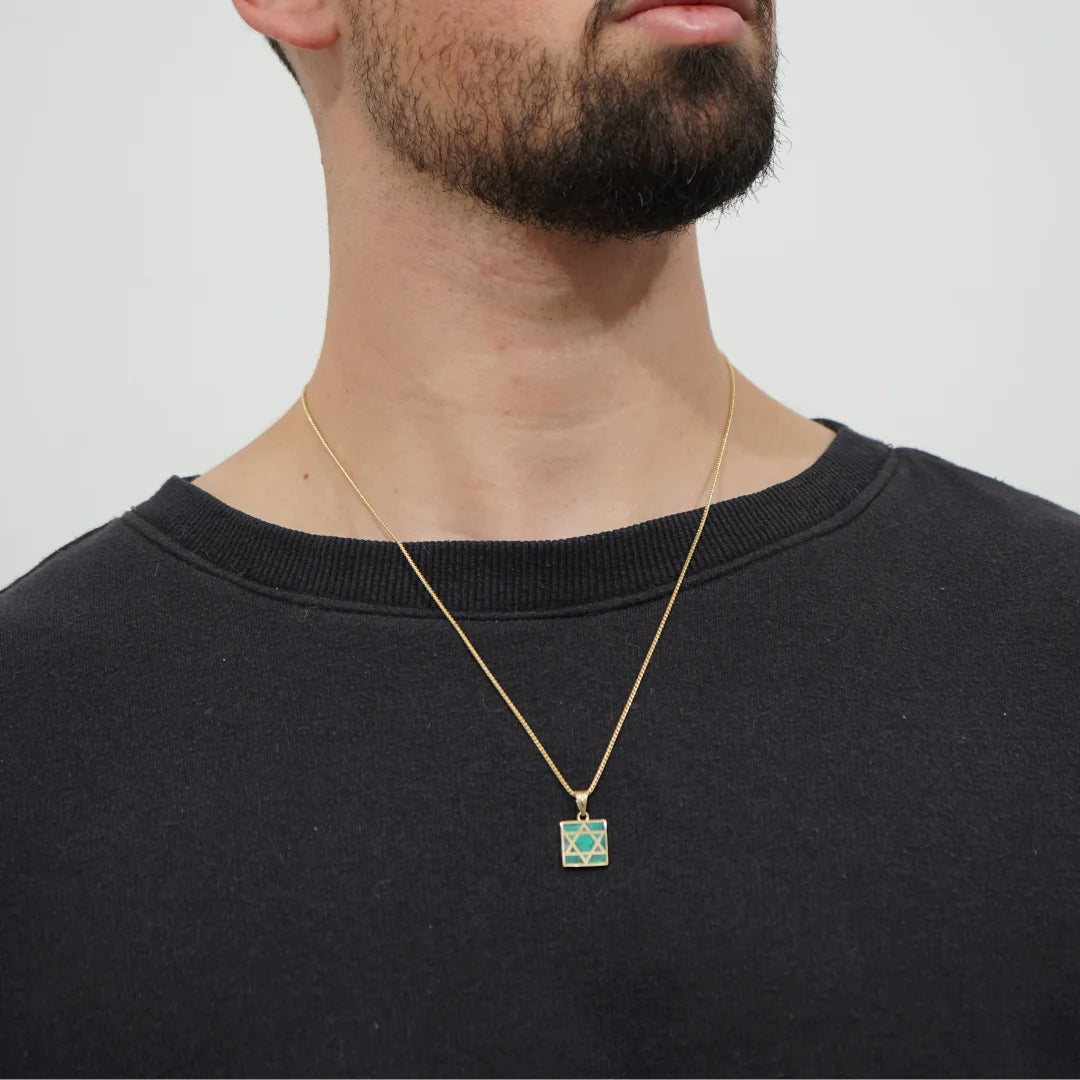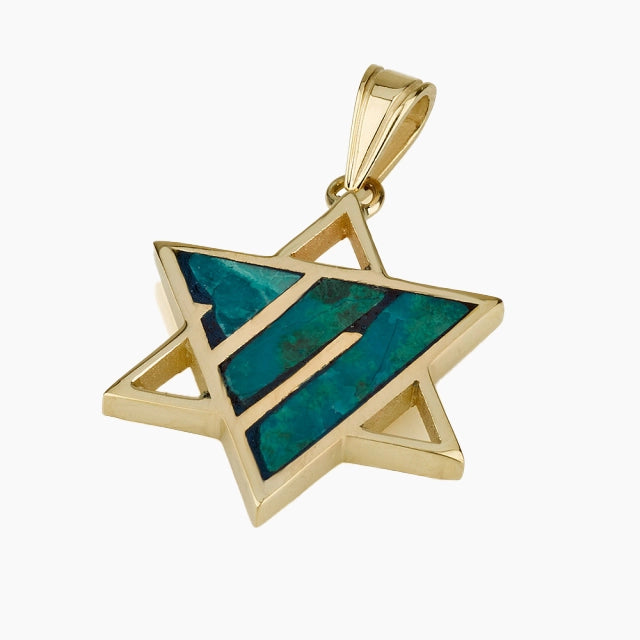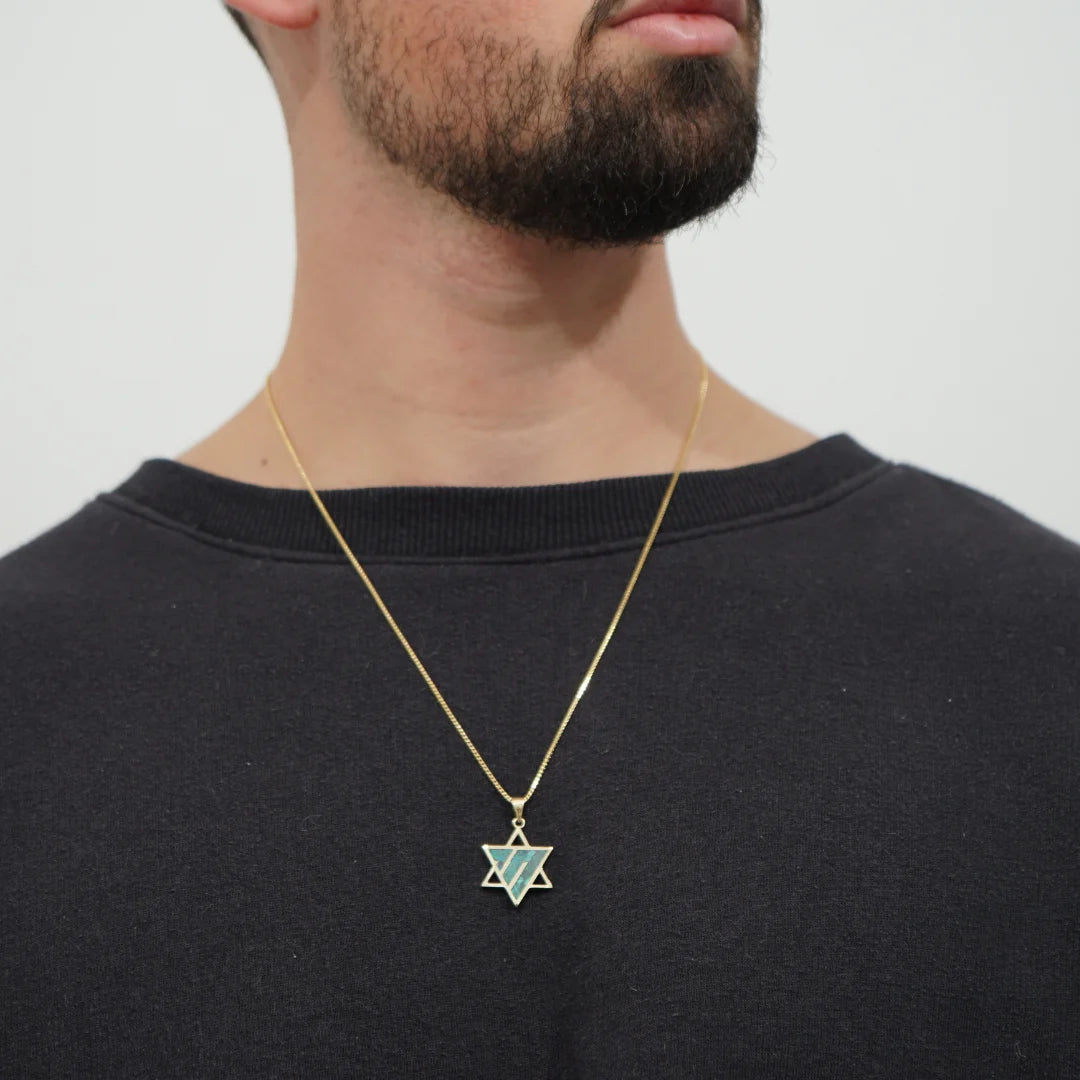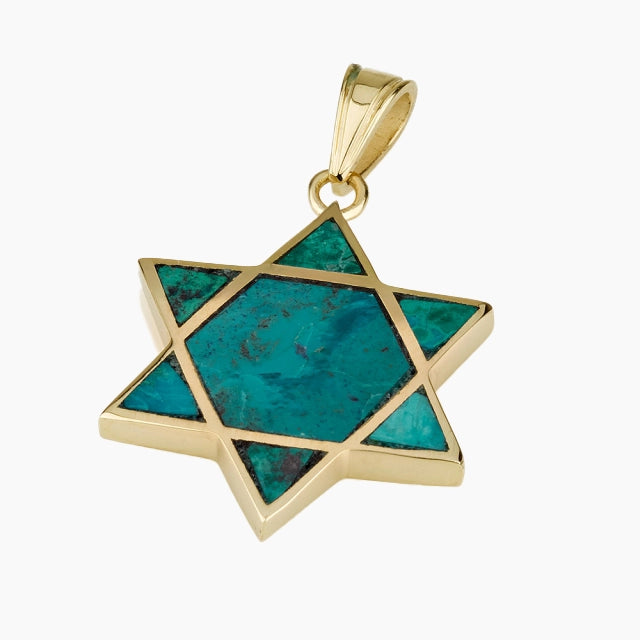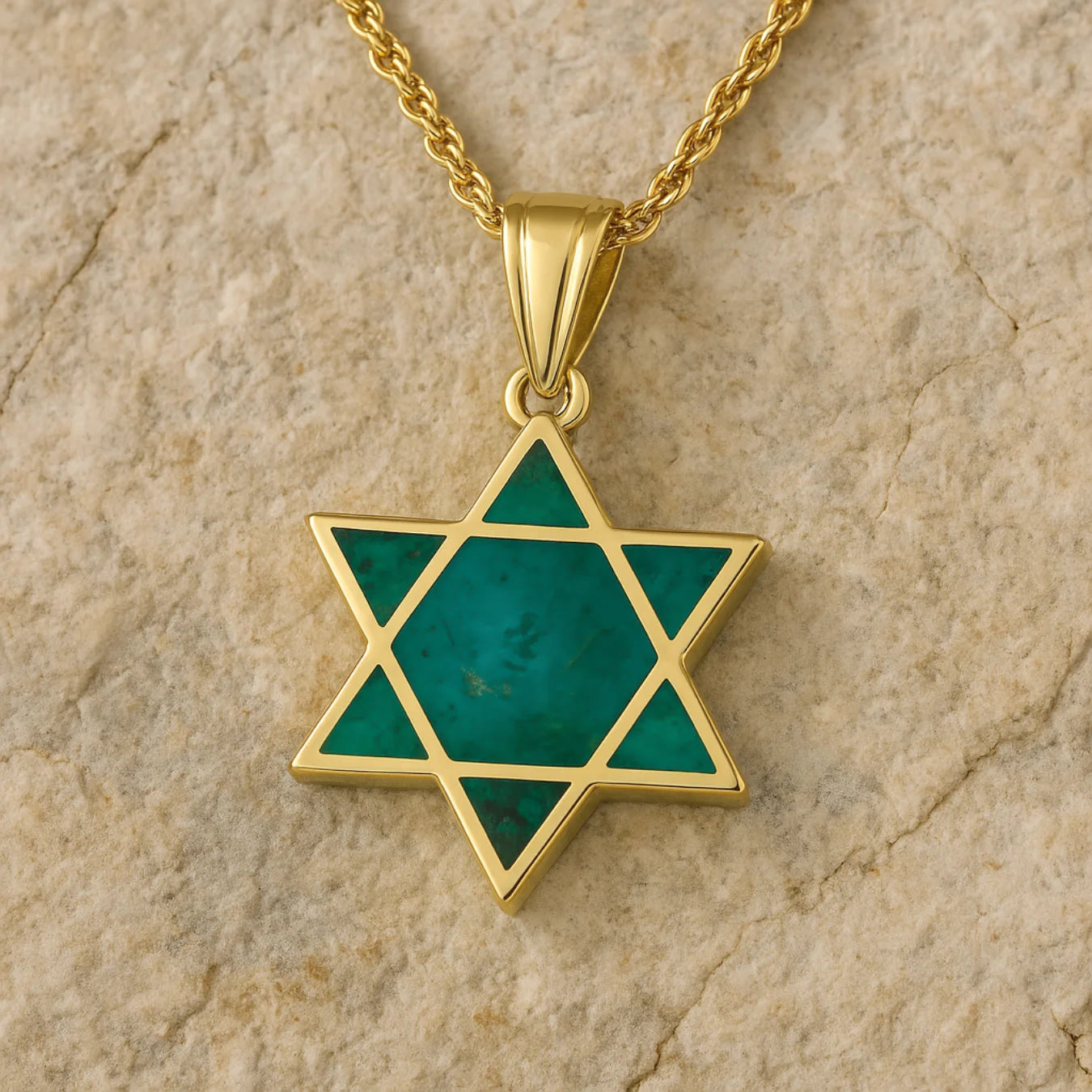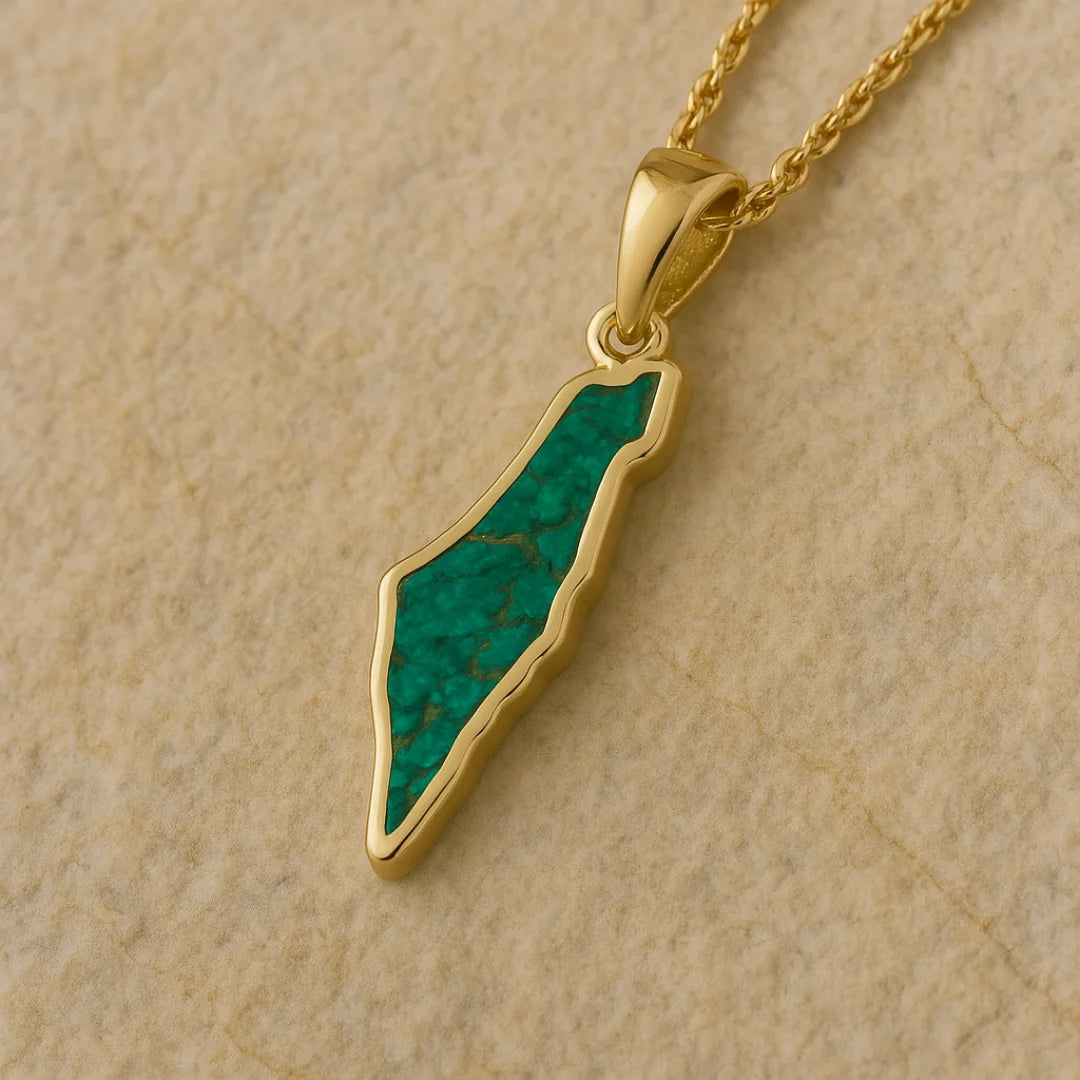

eilat stone
Eilat Stone Jewelry: The National Gem of Israel and Why It’s Called "King Solomon’s Stone"?
Some gemstones are adored because of their brilliance, others because of their rarity. But Eilat Stone is adored because of something deeper, the tales that it speaks. Nicknamed as the national stone of Israel and popularly known as King Solomon's Stone, Eilat Stone is not just a gemstone; it's a piece of history, culture and spirituality concocted together in shades of blue and green.
For thousands of years, this unique stone has been found only in Israel's southernmost tip, near the city of Eilat. Its striking mixture of turquoise, malachite, azurite and chrysocolla forms a swirling, brush-stroke pattern that appears to vibrate with life. But it's what humans have invested it with that makes it truly special: a symbol of protection, blessing and connection to the land of Israel itself.
In this post, we’ll explore the fascinating story of Eilat Stone. We’ll look at its origins, its role in Jewish culture and tradition, its unique appearance and how it has been shaped into jewelry that carries history on every surface. We’ll also see why this rare gem, no longer mined today, continues to inspire awe and emotional connection for those who wear it.
What Is Eilat Stone?
Eilat Stone is probably the most unusual and important gemstone that is identified with Israel. It is a rare, natural blend of several copper-based minerals, mainly turquoise, malachite, azurite and chrysocolla. The minerals blend together to create a stone that has a dramatic swirl of deep blues and vibrant greens, with spots of darker veining. No two specimens ever look precisely the same, which is a part of its charm.
Origins in Southern Israel
The stone was first discovered in the southern Negev desert, near the modern-day city of Eilat, from which it gets its name. Ancient copper mines in the area, some dating back thousands of years, are thought to be the original source of these stones. The mines were so important that they became known as "King Solomon's Mines," connecting the gem forever with biblical history.
Why It’s Called "King Solomon’s Stone"
Because deposits were linked to the biblical King Solomon's mythical mines, Eilat Stone is popularly referred to as King Solomon's Stone. Through the centuries, many have believed that the stone not only adds beauty but also the wisdom and blessing of Israel's great king.
Historical Mentions and Cultural Significance
While Eilat Stone itself is not noted in the Bible, the copper-rich region where it was found is strongly associated with biblical stories of mining, wealth and artisanry. At some time, the stone came to represent the land of Israel and was ultimately chosen as the official national stone of Israel. Its beauty, its rarity and its connection to Jewish history have made it highly valued both as a cultural artifact and as an important gemstone in jewelry.
The Appearance and Character of Eilat Stone
One of the aspects that makes Eilat Stone so well regarded is its absolutely unique look. As opposed to many gems which are a single color, Eilat Stone is a natural combination of several minerals. This creates a surface that appears to be painted, with colors and patterns shifting and undulating across each stone.
A Mix of Minerals: Malachite, Azurite, Turquoise and More
Eilat Stone is formed through copper deposits that naturally combine minerals like turquoise (blue), malachite (green), azurite (deep blue) and chrysocolla (a blend of blue-green shades). The result is a gemstone that's full of character, with no two stones alike. Some are vibrant and bright, whilst others are darker and more earthy, making each stone distinctive and imparting its own individuality.
The Colors of Eilat Stone and What They Mean
The blues and greens in Eilat Stone are not just pretty, they've been thought to be important for a long time. Blue is most often linked with the sky, with spirituality and divine protection and green with life, growth and renewal. Together, the colors create a symbol of harmony and balance, which is partially why so many individuals believe Eilat Stone possesses spiritual energy.
How to Tell if Eilat Stone Is Real
Because it is so rare, there is occasionally duplication of genuine Eilat Stones. Genuine stones usually have a natural, irregular pattern of color and mixture, with discernible veins and texture. Artificial reproductions often look too smooth or too regular in color. Genuine pieces are also softer than other gemstones and thus need special attention to avoid scratching.
Eilat Stone in Jewish History and Tradition
Eilat Stone is not merely a beautiful stone, but a stone inextricably linked with Israel's history and Jewish tradition. The fact that it was discovered in the region of Timna's ancient copper mines, often identified with the biblical King Solomon, gave it cultural along with spiritual value. It eventually came to be thought of as the national stone of Israel, infused with the country's heritage itself.
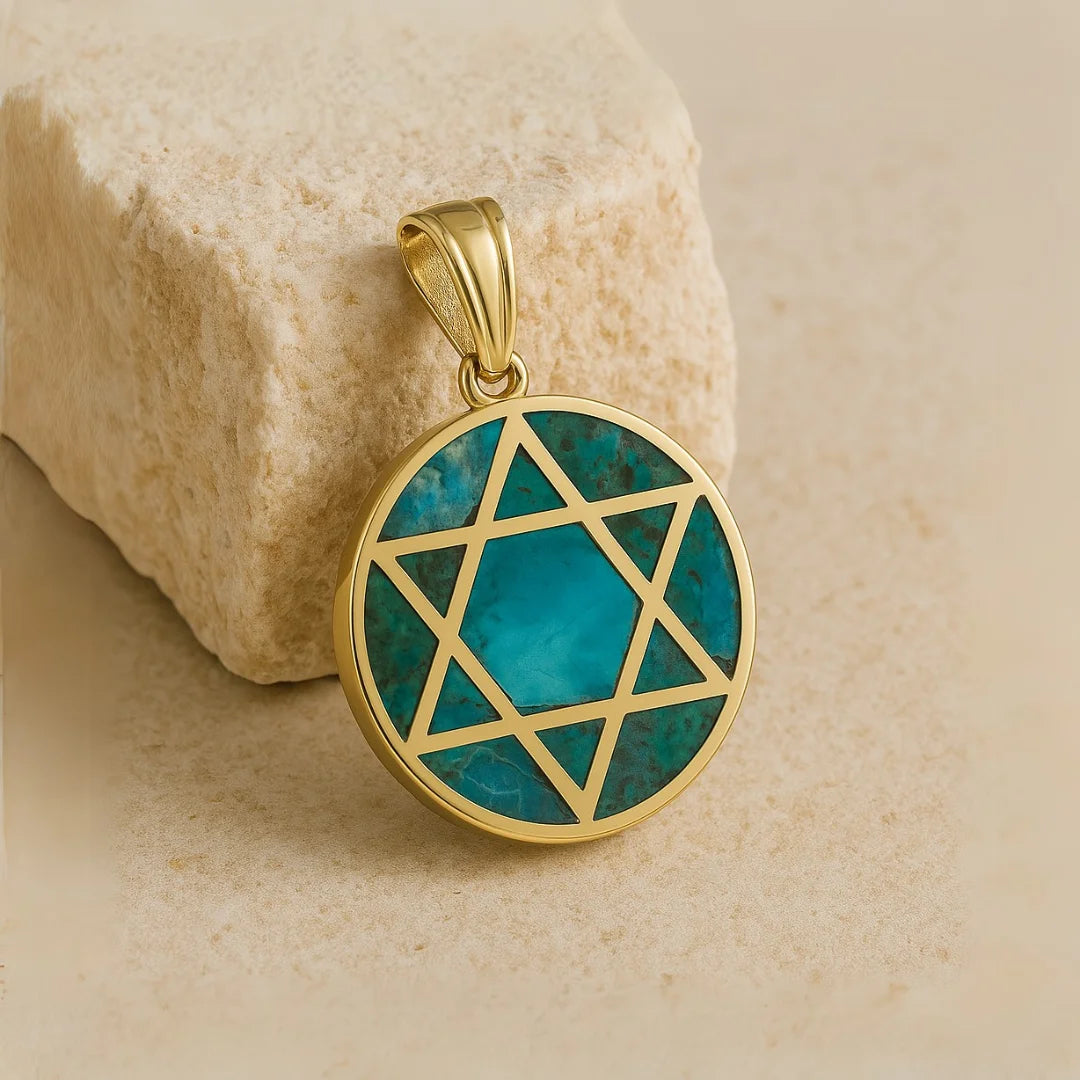
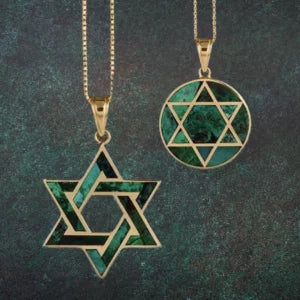
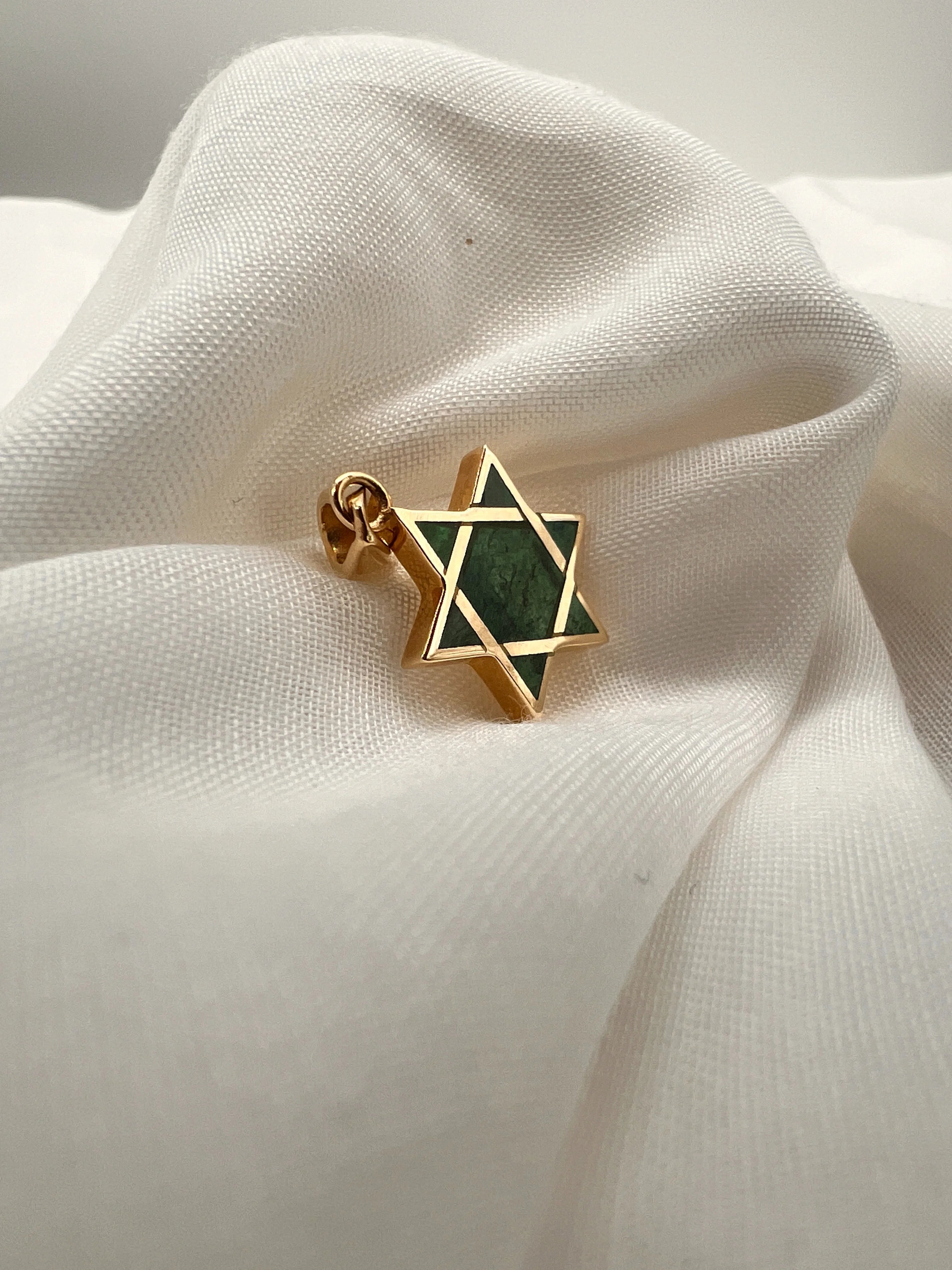
The National Stone of Israel
In 1950, Eilat Stone was officiated as Israel's national stone. Not just because of its blinding beauty, but because it signifies the unique bond between the land, its resources and people. For many, owning a piece of Eilat Stone is akin to owning a piece of Israeli history.
Connections to the Bible and King Solomon
While the Bible does not specifically name Eilat Stone, copper mines near Eilat are popularly linked with King Solomon's legendary wealth and craftsmanship. Ancient tradition has identified the stone with Solomon's riches, imparting an aura of myth and wonder. The stone has since been called King Solomon's Stone, giving it an almost biblical mystique.
Symbolism and Spiritual Meaning
Beyond its historical significance, Eilat Stone has been embraced for its symbolism. Many believe it to hold spiritual energy, bringing balance, peace and protection to the wearer. Its blue and green mix has been regarded as a blend of heaven and earth, faith and life, divine watchfulness and human rebirth. In this way, the stone is not only cherished for its beauty but loved for what it represents.
Is Eilat Stone Rare?
Yes, Eilat Stone is rare and its rarity is one of numerous reasons why it is so well-liked. As opposed to most other gemstones which are quarried in multiple places across the world, real Eilat Stone is quarried only in Israel, in the southern desert near the city of Eilat.
Why It’s No Longer Actively Mined
In the past, Eilat Stone was quarried from copper mines in the Timna Valley, which are often called King Solomon's Mines. Those mines are no longer open to commercial mining, largely to permit the natural beauty and historical importance of the area to be maintained. That means no more Eilat Stone is being mined from the earth, so there is a limited supply.
How Its Scarcity Affects Value Today
As the stone is no longer quarried, genuine items in the market are either from old stock or passed down through collectors and jewelers. This scarcity makes genuine Eilat Stone jewelry more valuable and meaningful. To wear a piece of it, one is not only wearing a gemstone but also something rare, tangibly linked to Israel's land and history.
Eilat Stone Jewelry Through the Ages
Eilat Stone has been greatly prized for thousands of years, first as a protective charm and then as the centerpiece of beautiful jewelry. Its transformation from an early amulet to modern jewelry demonstrates how the modest rock became a symbol of culture, religion and beauty.
From Ancient Amulets to Modern Jewelry
Eilat Stone used to be worn as a talisman in earlier times, believed to ward off evil and bring blessings. It was worn in its most basic form, rough chunks, beads, or small carvings, not so much as ornamentation but as protection. As centuries went by and craftsman skills grew, the stone found itself being used in rings, pendants and other jewelry, from a hidden charm to a proud assertion of identity and craftsmanship.
Types of Jewelry Made With Eilat Stone
Necklaces and Pendants
The most common way that Eilat Stone is worn is as pendants. They are usually made with bigger chunks of stone so that the natural blue and green swirl can be enjoyed. Most are designed into symbolic icons like the Star of David, the Hamsa hand, or plain drops that let the stone colors speak for themselves.
Rings
Rings are also popular, usually mounted in silver or gold. The mount highlights the stone's unique patterns, so that every ring can be somewhat one-of-a-kind jewelry.
Earrings and Bracelets
Eilat Stone earrings use smaller polished stones, sometimes paired with silver or gold for a demure but colorful effect. Bracelets are more often found with multiple stones, creating a solid band of color-shifting blues and greens that symbolize unity and protection.
Popular Designs and Symbolic Motifs
Eilat Stone is commonly combined with Jewish symbols such as the Star of David, the Hamsa hand, or even menorah patterns. Such combinations blend the metaphysical properties of the stone with the deep heritage of Jewish tradition, making each piece not just jewelry but a story on the skin.
Caring for Eilat Stone Jewelry
Eilat Stone is beautiful, but it is softer than certain other gemstones. That simply means it needs a little extra special care to keep its colors vividly alive and its surface scratch-free. With good habits, your jewelry can be stunning for generations.
Why Eilat Stone Needs Gentle Care
As opposed to diamonds or sapphires, Eilat Stone is made up of softer copper-based minerals including malachite and turquoise. This also makes it more prone to scratches, chipping and discoloration if not cared for properly.
Cleaning and Storing Tips
- Clean gently: Wipe the stone with a soft, damp cloth. Never use strong chemicals, ultrasonic cleaners, or soap, which will damage the surface.
- Avoid water soaking: Excessive exposure to water will break down the natural bonds of the stone.
- Store safely: Keep Eilat Stone jewelry in a soft pouch or velvet box, separate from harder gemstones that may scratch it.
Common Mistakes to Avoid
- Wearing it while swimming or bathing (chlorine, soap and salt can discolor the stone).
- Exposing it to direct sunlight for extended periods of time, causing fading of its natural colors.
- Storing it along with other jewelry without keeping them securely, which will lead to scratching.
With care, Eilat Stone jewelry remains not just a beautiful ornament but also a physical connection to tradition and the past.
The Emotional and Cultural Connection
Eilat Stone jewelry possesses more than color and shine, it possesses emotions, stories and heritage. For many, its wearing is like wearing a piece of Israel itself, a reminder of roots, history and religion.
Jewelry as a Link Between Past and Present
When one wears an Eilat Stone pendant or ring, one is not merely showing off a gemstone. One is wearing a piece that connects them to old copper mines, to King Solomon's past and to centuries that believed in its protective nature. It turns into more than an ornament but a badge of belonging and continuity.
Why People Still Choose Eilat Stone Today
Though no longer quarried, Eilat Stone remains extremely important. People are drawn to it for a multitude of reasons: some love its bold and unusual colors, others appreciate its status as Israel's national stone and many are comforted by its association with protection and blessing. For Jewish families especially, the giving and receiving of Eilat Stone jewelry is a way of keeping heritage alive, passing along not just an object but a story.
A Stone That Carries History and Beauty
Eilat Stone is not just another gemstone but a piece of history, culture and spirit in the blue and green. Having been created in the copper-rich earth of southern Israel, having been associated with the stories of King Solomon and being the national stone of Israel, it holds a place like no other gem.
From the ancient amulets to the modern-day rings and pendants, Eilat Stone has never been solely a matter of beauty. It's a matter of protection, blessing and a deep connection to the land and people of Israel. The very fact that it is scarce today only adds to its value, making every piece of jewelry more than an adornment, but a treasure linking past and present.
To wear Eilat Stone jewelry is to bear a story of heritage, strength and identity, close to the heart. It is a reminder that beauty can also be significant and that some stones are more than ornaments; they are living symbols of faith, memory and continuity.
Featured collection
Eilat Stone Pendants
Handmade Eilat Stone & 14K Solid Gold Israel Map Pendant
Bulbous 14K Gold Star of David Pendant With Eilat Stone
Classic 14K Gold Star of David Pendant with Eilat stone
Heritage 14K Gold Star of David Pendant with Eilat stone
Hollowed 14K Solid Gold Star of David Pendant With Eilat Stone
Classic Chai Pendant Handmade with Eilat Stone & 14K Solid Gold
Sharp Eilat Stone & 14K Solid Gold Chai Pendant
Squared 14K Solid Gold Star of David Pendant with Eilat Stone
14K Gold Star of David Pendant with Eilat Stone Chai Letters
Classic Eilat Stone Star of David Pendant Made with 14K Solid Gold
Frequently Asked Questions
Eilat Stone is often called King Solomon’s Stone because it was discovered near the ancient copper mines in Israel’s Timna Valley, sometimes referred to as "King Solomon’s Mines." Tradition links these mines to the wealth and craftsmanship of King Solomon described in the Bible. Over time, the gemstone became associated with his name, giving it an added layer of history and reverence.
Eilat Stone exists only in southern Israel, near the city of Eilat and the Timna Valley. The area has an abundance of copper and for that reason minerals like turquoise, malachite, azurite and chrysocolla naturally mixed together there to form Eilat Stone. Because the mines are shut nowadays, authentic stones available in the marketplace these days are either older stock or recycled material.
Yes, Eilat Stone is rare. Its rarity stems both from where it occurs geographically, which is only in Israel and from the fact that mining there is not allowed. That renders any existing Eilat Stone jewelry produced from material previously mined because no new material can be mined. It is harder to find and more valuable.
Eilat Stone itself is not explicitly mentioned in the Bible. The area where it was sourced, which is copper-rich and known as Timna, was however associated with biblical accounts of King Solomon's riches and mining. Because of this, the stone was therefore symbolically invested with the Bible and is routinely associated with accounts of King Solomon and his mythical treasures.
Eilat Stone is Israel's most recognized gemstone that is specifically related to the nation and the national stone of the country. While other minerals and rocks are found within Israel, the Eilat Stone is unique because of the rare presence of copper minerals and being directly associated with Israel itself and its history. Its uniqueness makes it the top gemstone that is only associated with Israel.
Natural Eilat Stone is naturally asymmetric mixing of greens and blues and often occurs with prominent veins and patterns. No two are alike and the surface generally exhibits a mix of malachite, turquoise, azurite and chrysocolla. The replica or imitation stone will be too shiny, too smooth, or monotonously colored without the natural surprise. Eilat Stone is also softer than most gems and thus may wear off if handled roughly.
Eilat Stone is priced according to size, quality and form of jewelry it's displayed in. As it is no longer mined and is a rare gemstone, prices are higher than most stones that look similar. Little smooth stones or simple silver-set items can start at the hundreds, but more extensively designed gold jewelry with Eilat Stone set can cost anywhere from a few hundred to a few thousand dollars. It is also lovely in its cultural significance as Israel's national stone and not merely its price.

